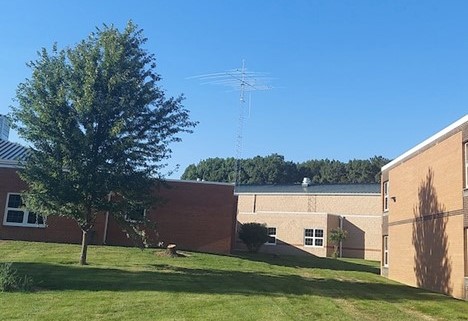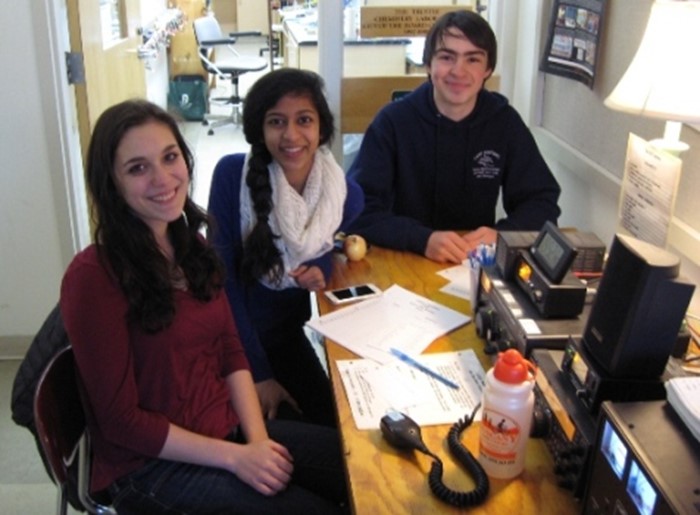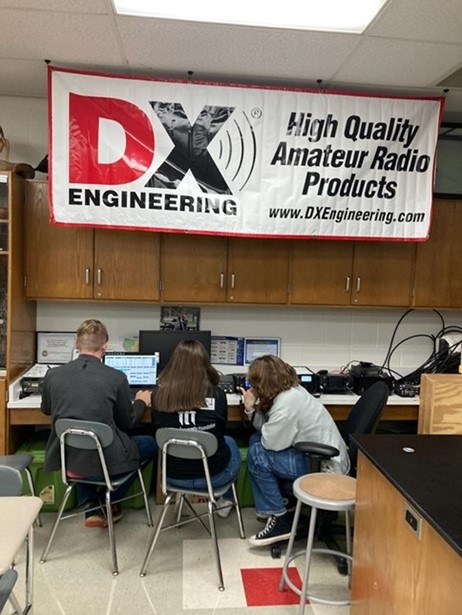School clubs are a great way to get young people interested in, or at least exposed to, amateur radio. Without my school club, K8LPS, I wouldn’t have had the motivation or desire to get my license, and even if I had, I wouldn’t be nearly as involved in the hobby.
School clubs can, however, be particularly challenging to start. After that hurdle has been cleared, it can be even more of a challenge to get kids licensed, particularly younger club members.
While actually studying for the Technician exam isn’t that much of a challenge (having all of the right answers publicly available along with study websites and online platforms definitely helps!), many students haven’t learned how to effectively study yet, so the Elmer’s job often becomes teaching young people how to study rather than teaching them the actual exam material (which is also important, but usually less of a struggle than teaching study skills).
As my school’s club has grown, both in members and permanent equipment, it has become easier to incorporate amateur radio into the high school physics course my school offers. My mother, KB8VAQ, is one of the amateur radio club advisers. She teaches physics and an engineering design course at the high school, so amateur radio flows pretty naturally into her courses.

I took physics with her this past school year and enjoyed sharing my hobby with my classmates in an atmosphere where it was meaningful to them. In the fall, we operated in the ARRL School Club Roundup for a few days, which the class enjoyed (and not just because it got them out of taking notes). Some of them were astonished when my friends from YOTA, YACHT, and other amateur radio groups came back to our CQ and asked them to “Say hi to Katie.” (I suppose they assumed that I was the nerd with a small social circle everywhere I went.)
We also did some operating in the February School Club Roundup. During that round, some students were even excited to listen to some CW operating and were motivated to learn a few letters.


After the February School Club Roundup, a few members of my physics and engineering design courses realized that they enjoyed the operating that we did for those events and wanted to get their own licenses so they could get on the air and stay involved with the hobby even after they graduated in May. My mother and I compiled a list of resources they could use to study for their exams. She set up a testing session to take place at the school with the Volunteer Examiner (VE) team that she’s part of.
As the testing session date approached, we took a few days of classroom time to review some of the more challenging material for the exam. This gave the students who had been studying independently a chance to ask questions about the material and encouraged those who had not started studying to take a look at the websites that had been posted.
My mother made sure that students wanting to test got an FRN (FCC registration number) before the day of the session so that everything went smoothly. Soon it was time for my classmates to take their exams. Seven of them ended up passing. They were quite excited to finally get their call signs, receive their HTs that the club gives to new licensees, and make their first contacts on our school’s repeater.
Opportunities like this through school clubs are incredible for young people interested in amateur radio because even if they don’t end up getting licensed right away, the seed of amateur radio has been planted and they’ll have a leg up if they ever decide to pursue it.
Having gotten nearly twenty people licensed since its beginning, my school club is spreading amateur radio as far as it can. Although all seven of the students who got their licenses this year were graduating seniors and won’t be able to stay involved with the high school club, hopefully they’ll have the opportunity to join their university’s radio club or start one and become involved with the Collegiate Amateur Radio Program (CARP) through the ARRL.

